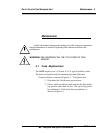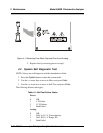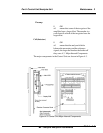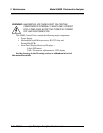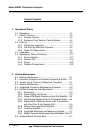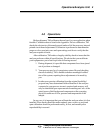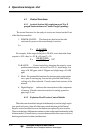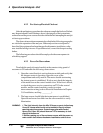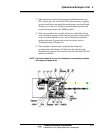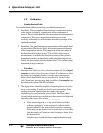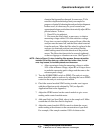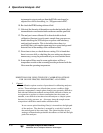
4–1
Operations/Analysis Unit 4
Teledyne Analytical Instruments
A Business Unit of Teledyne Electronic Technologies
4.0 Operations
Before shipment, TAI calibrates the analyzer for your application when
feasible. Calibration data is listed in the Appendix. Prior to calibration, TAI
checks the electronics of the analyzer and makes all of the necessary internal
printed circuit board adjustments. Calibration is performed to determine the
proper or close proximity zero and span settings, and also to verify that the
analyzer response is linear.
After calibration, TAI makes a lengthy stability check to insure that the
analyzer performs within all specifications. We advise that you recalibrate
your equipment as part of start-up for the following reasons:
1. During shipment, it is possible that components have been jarred
out of position or damaged.
2. Your process may be of a proprietary nature. Beyond checking
electrical stability, TAI is unable to make a meaningful calibra-
tion of the system, requiring these adjustments to be made by
you.
3. In other cases precise calibration from the original feasibility/
proposal may have determined field calibration of the analyzer
connected to your process stream is required and accuracy will
only be obtainable upon representatiive matching and use of the
actual process fluid background components at the operating
physical conditions of flow, pressure and temperature of the
sample.
In any case, it is important that you calibrate the analyzer when it is first
installed. Zero checks should be made routinely once or twice a week and
span calibration should be performed weekly, at first, and monthly after
reproducibility is assured.



